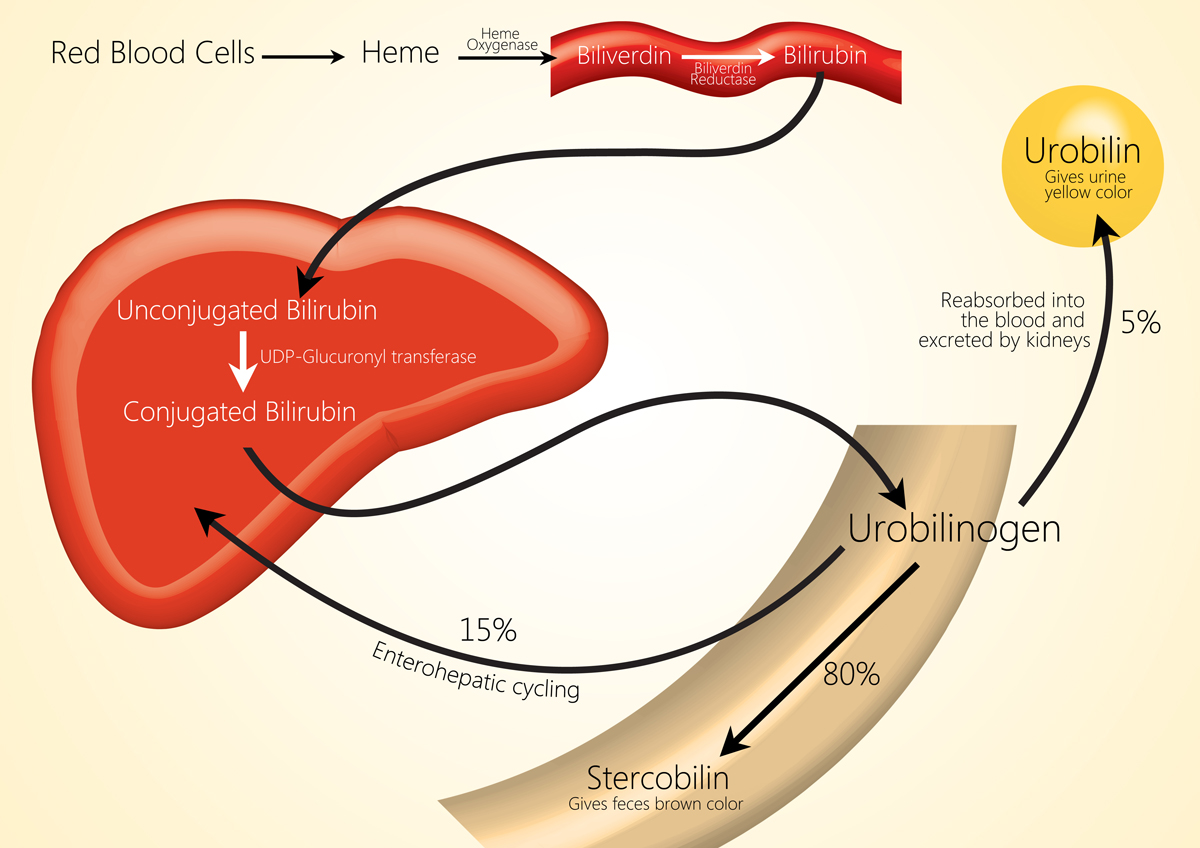WBR0648
| Author | [[PageAuthor::Serge Korjian M.D. (Reviewed by Serge Korjian)]] |
|---|---|
| Exam Type | ExamType::USMLE Step 1 |
| Main Category | MainCategory::Biochemistry |
| Sub Category | SubCategory::Gastrointestinal |
| Prompt | [[Prompt::A 34-year-old healthy man presents to the primary care clinic for a general check-up. The man has no complaints except minor fatigue during the day, but he relates this to his stressful life style. Physical exam is unremarkable except for mild scleral icterus. The primary care physician decides to order some tests to rule out any serious illness. Lab results return with a normal CBC, reticulocyte count, and blood smear. Transaminases, alkaline phosphatase, and GGT are also all within normal range. Indirect bilirubin is noted to be 2.6 mg/dL with direct bilirubin below the upper limit of normal. The patient remembers that he was noted to have an elevated indirect bilirubin several years earlier but his work-up back then also came back normal. Which of the following pathological mechanisms is involved in this patient's condition?]] |
| Answer A | AnswerA::Increased hemoglobin breakdown |
| Answer A Explanation | AnswerAExp::Increased hemoglobin breakdown is seen in patients with hemolysis. Our patient's CBC, retic count and blood smear showed no indication of hemolysis. Increased hemoglobin breakdown is not seen in Gilbert syndrome |
| Answer B | AnswerB::Absent UDP-Glucuronyltransferase |
| Answer B Explanation | AnswerBExp::UDP-Glucuronyltransferase is absent or defective in Criggler-Najjar syndrome. The presentation would be more severe in a much younger patient with associated liver dysfunction. |
| Answer C | AnswerC::Decreased bilirubin uptake by the liver |
| Answer C Explanation | AnswerCExp::Decreased bilirubin uptake by the liver is the main mechanism behind Gilbert syndrome. |
| Answer D | AnswerD::Bile outlet obstruction |
| Answer D Explanation | AnswerDExp::Bile outlet obstruction would usually lead to conjugated hyperbilirubinemia with deranged LFTs. |
| Answer E | AnswerE::Hydrolysis of conjugated bilirubin |
| Answer E Explanation | AnswerEExp::Hydrolysis of conjugated bilirubin is one of the mechanisms of neonatal hyperbilirubinemia. |
| Right Answer | RightAnswer::C |
| Explanation | [[Explanation::
Gilbert syndrome is a benign condition leading to elevated indirect bilirubin levels. Its main pathophysiologic mechanism is the decreased uptake of unconjugated bilirubin by the liver, although some decrease in the efficiency of UDP-glucuronyltransferase can be noted in some patients. Usually patients present with asymptomatic jaundice. Fatigue can be present in some patients. The increase in bilirubin is usually triggered by fasting, febrile illness, alcohol, exercise, or stress. It is important to rule out any other disease processes in patients suspected to have Gilbert syndrome. Lab tests include a CBC with reticulocyte count and blood smear for any signs of hemolysis, and liver function tests for any signs of liver disease. Gilbert's syndrome doesn't require treatment. Patients with Gilbert syndrome have an excellent prognosis and the unconjugated hyperbilirubinemia does not cause any health problems. |
| Approved | Approved::Yes |
| Keyword | WBRKeyword::Gilbert Syndrome, WBRKeyword::Unconjugated hyperbilirubinemia, WBRKeyword::Bilirubin, WBRKeyword::UDP-glucuronyltransferase |
| Linked Question | Linked:: |
| Order in Linked Questions | LinkedOrder:: |